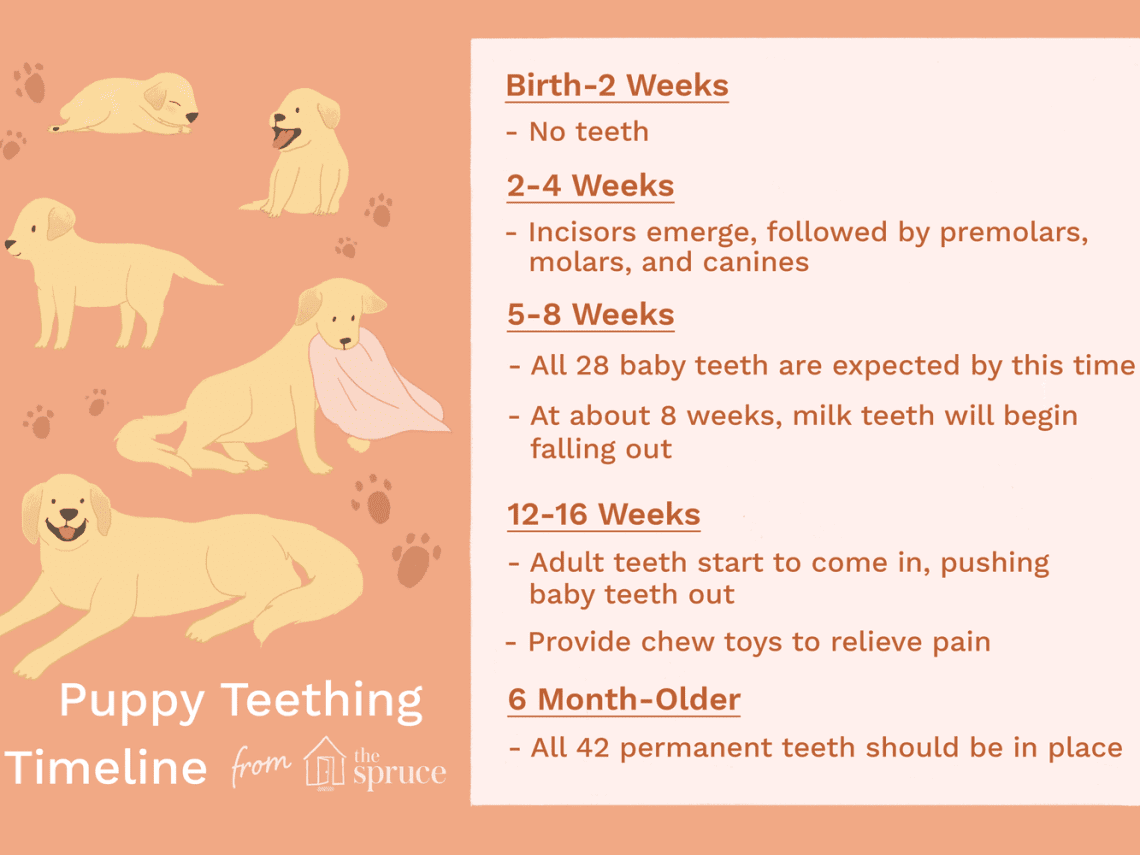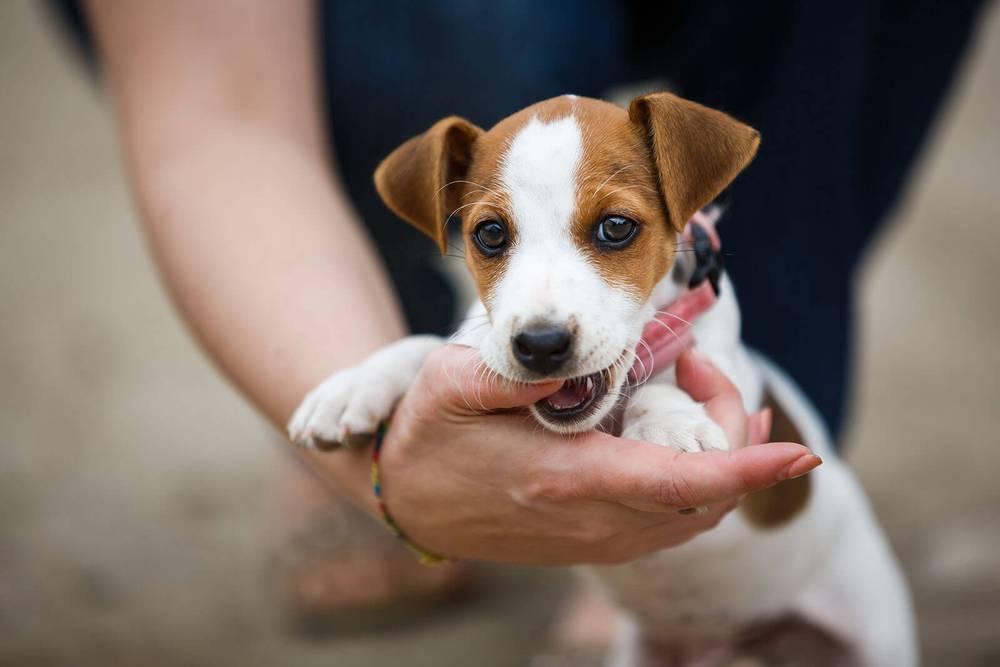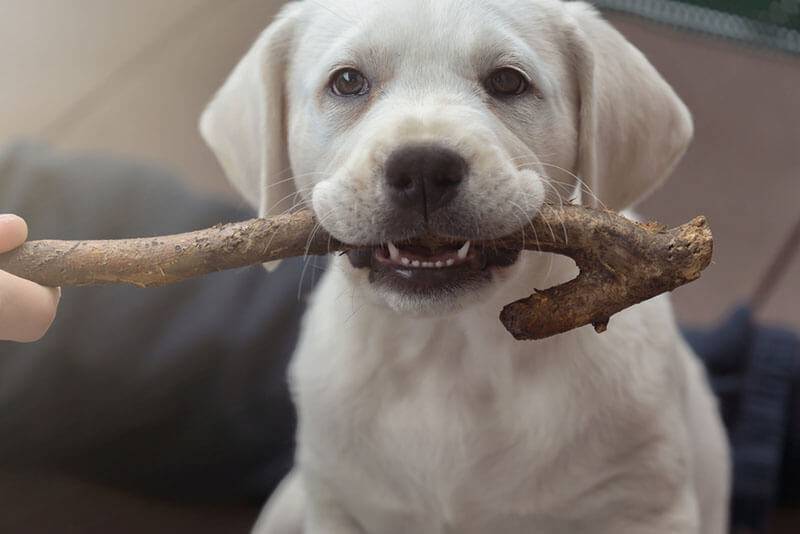
Kedu afọ ụmụ nkịta na-atụfu ezé mmiri ara ehi ha?

But first, let’s figure out how many teeth a dog should have. An adult dog normally has 42 teeth:
12 incisors – in the wild, they help the dog to remove the flesh located as close to the bone as possible;
4 fangs – used for gripping and piercing;
16 premolars are sharp, serrated and beveled teeth that are used to tear and grind food;
10 molars – These teeth are wider and flatter, which helps the dog grind food on its way to the digestive tract.
All of them do not appear immediately – at first the puppy has milk teeth. They begin to erupt from the gums around the 3rd week. By week 8, they have a full set of 28 milk teeth:
12 incisors – they usually erupt three to six weeks after the puppy is born;
4 fangs – appear between the 3rd and 5th weeks of a puppy’s life;
12 premolars – begin to appear between the 5th and 6th weeks.
Although these temporary teeth are fragile, they are very sharp. This is why mothers start weaning puppies from 6 to 8 weeks.
From about the 12th week, milk teeth begin to fall out, being replaced by permanent ones. This process can take 2-3 months. By the age of six months, the puppy should already have all the “adult” 42 teeth visible.
The size and breed of the dog also affect how long it takes to change teeth, so don’t worry if your puppy has a different pace – check with your veterinarian, it might just be your breed. You can even consult online – in the Petstory mobile application. You can download it from the link.

Abụọ 17 February 2021
Emelitere: Febụwarị 18, 2021





